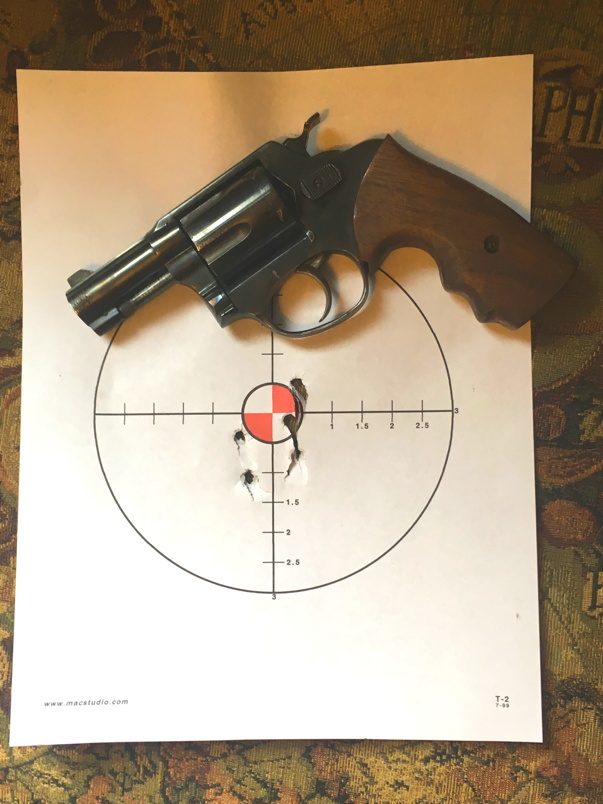Well , your 7 yard target looks good. As for me , I cannot be accurate or confident with a 12-14# trigger - and I have tried. By the way , why the range? 12# is heavy - 14# is monstrously so. Does your Rossi really vary that much?
Please share the details regarding your trigger job.
The range is because I don't have a trigger gauge, so I am only guessing the pull weight is somewhere between 12-14lbs. I suppose that instead of guessing I should have just said 'pretty heavy.' It might be a bit less; my wife doesn't have trouble pulling it and she does not have my strong trigger-finger.
Details of the trigger job- as I said, there was some luck and circumstances involved. I am an amateur/hobbyist with some knowledge of guns and a lot of experience working with my hands. Originally this was going to be a range-gun for my wife, but she changed her mind about what she wanted midway through the project. Initially I simply detail-stripped the trigger mechanism and anywhere metal was working against metal I carefully polished the surfaces. This produced a nice, smooth pull.
Trying the gun at the range we discovered it had light-strike issues (and some other minor issues not relevant to the trigger-job.) I replaced the mainspring with an S&W Model 60 mainspring and that was better, but still had issues with some brands. By this point the project had gone from 'Linda's range toy' to 'my carry gun' so I wanted absolute reliability. I wound a short 'helper spring' from music-wire and placed it in-line with the mainspring, which solved all the issues with light strikes.
The trigger-pull was now heavy and smooth, but still had some staging so I looked at where metal was bearing on metal at different points in the mechanisms travel, then selectively polished in the areas where there was increased resistance. This reduced the staging to the point where an experienced DA shooter cannot reliably stop the trigger mid-pull without practice.
The feeling of pulling this trigger quickly is initial resistance that suddenly 'breaks' and the tigger 'snaps' to complete the cycle. If you have a solid grip the gun does not move appreciably during the 'snap' phase. In practice this makes for a very effective rapid-fire trigger that feels quite different from a typical double-action revolver trigger. It's not a trigger that you are going to pull when you don't intend to, but when you do pull it it's easy to use accurately.
I wound up at a different place than most people working on a trigger for a carry revolver, but it's a place that works and arguably offers an extra layer of safety.This is more something I 'discovered' more than invented. I posted this to get people's thoughts about this sort of trigger.
I'm not trying to sell this in any sense; I am not and never will be a professional gunsmith. I don't have the skill set, interest or training to do this as a job; it's all just for fun. Ironically this project has taken so long I now have other guns I would rather carry...


